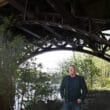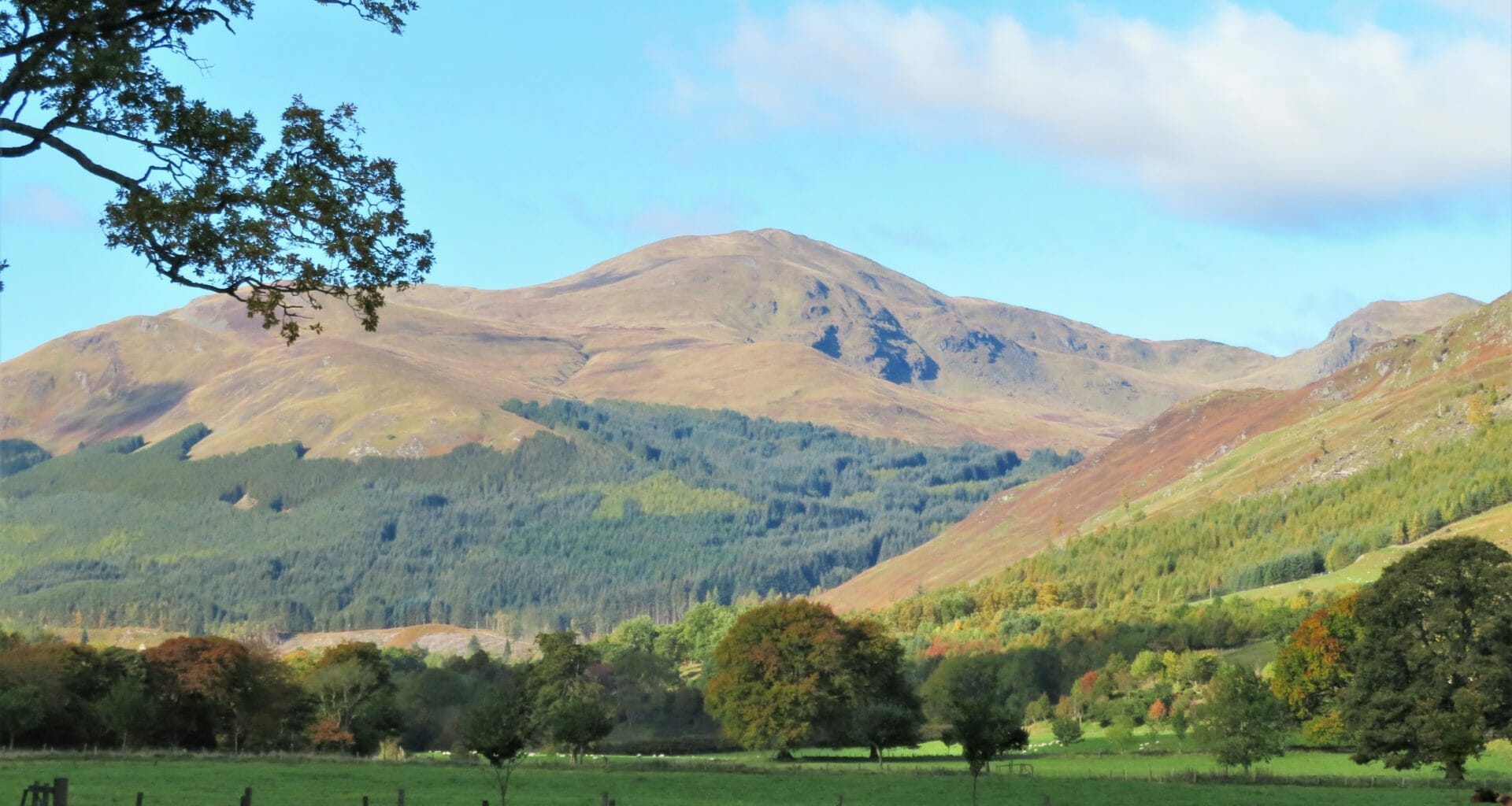A walking charity has urged Perth and Kinross Council to take legal action against a sporting estate accused of continually breaching public access rights years after hundreds of public complaints were made.
Ramblers Scotland said North Chesthill Estate in Glenlyon, which is home to four Munros, has ”long been notorious amongst walkers for its attempts to restrict access, with frequent reports of misleading signs, locked gates and obstructive staff”.
It urged landowner Alastair Riddell to bring his 6,500 acre estate out of “the Victorian era”.
In reply, North Chesthill said it “actively responds to all enquiries by prospective walkers” and manages “a small estate area where walkers cannot avoid conflicting with the business of stalking and deer management”.
This is not the first time the estate has been accused of restricting access. Hundreds of people reported 611 access issues including locked gates and warning signs in a 2014 Mountaineering Scotland survey.
In August, several people used the hiking website, Walk Highlands, to allege access problems at the estate, including one who claimed they were told camping was not allowed, despite the right to camp being outlined in Scotland’s land access laws.
Brendan Paddy, director of Ramblers Scotland stressed all estates have “a legal duty to respect access rights, as set out in Scotland’s access legislation”.
He said the local council and Local Access Forum, as well as community members and recreation bodies have, “without success, spent considerable time and energy trying to resolve issues arising from the estate’s attempts to restrict access”.
Paddy added: “It’s time North Chesthill estate came out of the Victorian era and joined 21st century Scotland – or that Perth & Kinross Council took legal action to uphold the right of public access for all.”
The estate recently announced plans to close its car park throughout September and October to “help manage visitor pressure”, citing shooting activity required to control its high deer population.
Perth and Kinross Council said it had asked Riddell not to close the car park, which it argued would not reduce visitor numbers and may lead to greater congestion on the surrounding roads. The car park remained open as of 9 September, it added.
North Chesthill’s website claims authorities including NatureScot support its efforts to deter hill walking throughout the Autumn. But the wildlife agency told The Ferret it disputes this.
“Our Heading for the Scottish Hills service provides specific guidance based on discussion between the estate and the council, but this does not ‘discourage hill walking…from September through November’,” a NatureScot spokeswoman stressed.
“We do not support the approach suggested on the estate’s website and have contacted the estate to request that our position is accurately reflected.”
The wildlife agency said it was aware of the “long history of access issues in the area” and pledged to continue to encourage the estate to work with the council “to achieve a positive outcome for access,” she added.
North Chesthill argued the stance of the authorities and walking groups was “inconsistent” with the Scottish Outdoor Access Code (SOAC), which asks walkers to avoid crossing land while deer stalking is taking place.
An estate spokesperson shared a SOAC graphic with this advice, which it claimed was used in a NatureScot poster.
Landowner ‘prohibitive’
In August, several North Chesthill visitors claimed to have recently experienced access issues. The estate’s “views on hillwalker access are ridiculously prohibitive”, they wrote on Walk Highlands.
One user, JuliaS, claimed to have had a “nasty experience” at North Chesthill and alleged an estate worker said camping was not permitted. The right to camp in Scotland is outlined in the land reform act.
Another walker, Alex W, said: “I can remember as a teenager (and that wasn’t last week) going to Glen Lyon with some trepidation after hearing stories from my father and his walking buddies about confrontation with estate managers. I was last there about two years ago, it seems not much has changed.”
User Sunset tripper claimed the council “have done nothing to protect access rights in this area and the landowner must be loving the help they get to restrict access.” The local authority is “basically banning cars from the Glen,” they argued.
Perth and Kinross Council recently used a Temporary Traffic Regulation Order to ban parking on about 60 miles across nine rural roads near popular beauty spots like Glen Lyon, Loch Tay, Loch Tummel and Schiehallion.
The council said the ban, which includes the C448 road from Fortingall to Bridge of Balgie near the entrance to North Chesthill, was owed to the “unprecedented number of visitors” in rural Perthshire following the easing of lockdown restrictions.
The order, which began on 22 August and will continue for a maximum of 18 months, led to condemnation from walking groups who said it was a “disproportionate” measure made without consulting outdoors users.
The York Mountaineering Club claimed eight cars parked nearby the estate had been given fixed penalty notices on one day in July. “This serves the interests of North Chesthill Estate, which has tried for years to curtail access to its hills,” it argued.
A council spokesperson stressed that the local authority “encourages responsible tourism and welcomes visitors to the area” and “would not support any landowner in seeking to restrict or reduce access”.
“Clearways were introduced to protect communities from inconsiderate and dangerous parking,” they said. Vehicles parked along roadsides had in some cases prevented bin lorries and delivery vans reaching communities and could have obstructed emergency vehicles, the spokesperson argued.
“Our Visitor Management Group regularly reviews the operation of clearways and we continue to find solutions to issues surrounding lack of parking spaces at many beauty spots in Perth and Kinross,” they added.
Scottish Greens MSP for Mid Scotland and Fife, Mark Ruskell said: “Rural Perthshire is proud to welcome visitors from round the world and public access is not only the law, it’s also vital for the local economy.
“Landowners have a responsibility to stick to the law rather than re-interpret it to create their own exclusive set of access rules.”
Deer management and access
North Chesthill’s website, which offers commercial deer stalking to clients, argues that with deer numbers increasing across the estate, the need for a cull is now even more important.
But the website also claims “constant deer disturbance by walkers” is “driving the deer off the estate”. “Neither do we get the opportunity for undisturbed deer management and being able to deliver for our guests,” it adds.
North Chesthill is part of the Breadalbane Deer Management Group, which works to control deer numbers in the region. In its 2021 maps, North Chesthill is highlighted in red, indicating the estate’s high deer density of 21-25 deer per square kilometer.
This is a significant increase on the 2019 density, when there were 10-14 deer per square kilometre.
North Chesthill tells prospective visitors that “responsible access is a privilege”. It instructs visitors to use only “the recognised path” and only in a clockwise direction.
This would require walkers to commit to the entire 11-mile route and scale all four Munros, which takes around seven to eight hours to complete, according to Walk Highlands.
The estate says this route was proposed to protect wildlife like plants, nesting birds and calving deer from April to July, deer breeding in the Autumn, and to allow for deer culling.
Perth and Kinross Council said it supported Riddell’s proposed route and “other reasonable requests” to protect wildlife.
Mountaineering Scotland emphasised responsible access “is a statutory right under the Land Reform Act 2003” and claimed Riddell’s estate was “actively attempting to discourage” visitors.
The organisation seeks to work with landowners “to balance that right of responsible access with the commercial interest of estates, particularly during the stalking season,” said chief executive, Stuart Younie.
But he added: “It’s disappointing that in this case the estate is actively attempting to discourage people from enjoying the physical and mental benefits of accessing the outdoors, particularly as we recover from the impact of the health pandemic over the last 18 months.”
A spokesperson for North Chesthill said: “This is a small estate area where walkers cannot avoid conflicting with the business of stalking and deer management.
“The authorities, and the council, encourage walkers to plan ahead and walk elsewhere at this time by responding positively and helpfully to advice they give in Heading to the Scottish Hills and Walk Highlands.
“The estate actively responds to all enquiries by prospective walkers and very much appreciates their concern and conscientiousness and the help they give by heeding official and local management advice.”
This story was co-published with the Sunday National.
Correction: An early version of this story featured a photo by Neil Williamson (CC / Flickr). It was bought to our attention that this image was of a different estate in Glen Lyon. As there is no suggestion that there are access issues at this part of the glen, the image was updated on 06/10/2021 to show a view of Glen Lyon from the road at Chesthill, taken by Gordon Hatton. The new image is also Creative Commons licensed and published on Geograph.org.














